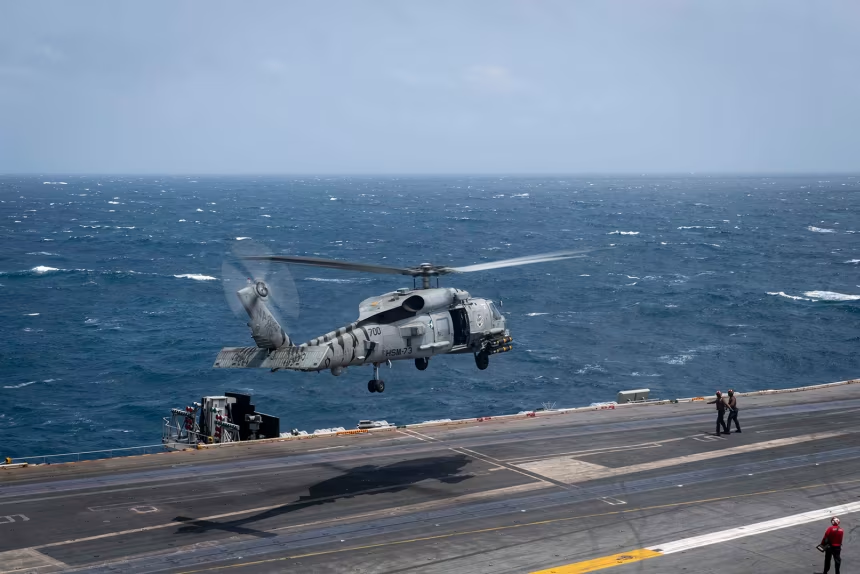In a rare double incident on Sunday, a U.S. Navy helicopter and a fighter jet crashed within half an hour during separate routine operations over the South China Sea. According to the Navy’s Pacific Fleet, all crew members from both aircraft were rescued safely, and an investigation is underway to determine the cause.
The first mishap involved an MH-60R Seahawk helicopter operating from the aircraft carrier USS Nimitz. The Navy reported that the chopper went down around 2:45 p.m. local time while conducting standard flight maneuvers. Swift search-and-rescue efforts ensured that all three crew members were recovered without major injuries.
Roughly 30 minutes later, an F/A-18F Super Hornet fighter jet also crashed during another routine operation from the same carrier. Both pilots successfully ejected and were retrieved by rescue teams. The Navy confirmed that this marks the fourth Super Hornet lost in 2025, following previous incidents in the Red Sea and off the coast of Virginia earlier this year.
Speaking aboard Air Force One en route from Malaysia to Japan, U.S. President Donald Trump called the near-simultaneous crashes “very unusual” and suggested that investigators were considering fuel contamination as a possible cause. “They think it might be bad fuel. We’re going to find out — nothing to hide,” Trump told reporters traveling with him.
The Navy emphasized that both aircraft were engaged in standard peacetime operations and that there were no hostile actions involved. Nonetheless, the twin crashes occurred over one of the most strategically sensitive maritime regions in the world.
The South China Sea, bordered by China and several Southeast Asian nations, remains a flashpoint for global tensions. Despite an international court ruling rejecting Beijing’s expansive territorial claims, China continues to assert control over nearly the entire waterway and has built extensive military facilities on artificial islands. The U.S., maintaining its stance on freedom of navigation, regularly conducts patrols in the area to counterbalance China’s military presence.
The timing of the incidents also adds an unexpected layer of tension to President Trump’s ongoing diplomatic tour across Asia. He is scheduled to meet Chinese President Xi Jinping later this week, with trade and regional security expected to dominate the agenda. Treasury Secretary Scott Bessent said Sunday that the two countries have reached a preliminary framework for a new trade agreement — a sign of easing economic friction after months of tariffs and countermeasures.
The USS Nimitz, currently the oldest active U.S. aircraft carrier and one of the largest warships in the world, is slated for retirement next year after more than four decades of service. Sunday’s crashes underscore the operational risks faced by the U.S. military as it maintains a strong presence in contested international waters.
While investigators continue to analyze flight data and possible mechanical or fuel issues, officials have stressed that the priority remains the safety of crew members and maintaining readiness in a region that has become increasingly critical to U.S. strategic interests.

